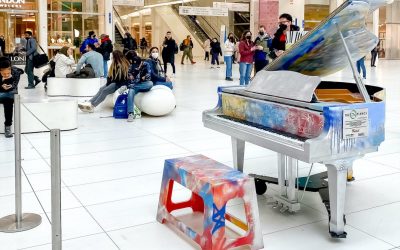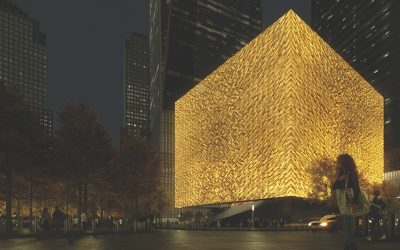 As any Downtown resident can tell you, the South Street Seaport has been a lightning rod for change. But as it adapts to each era, through which it endures, it is also a constant reminder of the city’s proud past as the nautical hub that helped launch our city as the world’s center of trade and commerce – foreshadowing the towers of the World Trade Center by centuries.
As any Downtown resident can tell you, the South Street Seaport has been a lightning rod for change. But as it adapts to each era, through which it endures, it is also a constant reminder of the city’s proud past as the nautical hub that helped launch our city as the world’s center of trade and commerce – foreshadowing the towers of the World Trade Center by centuries.
And while the effect of Superstorm Sandy has left many of its historic buildings empty, for now, each is poised to open a new chapter in the future of the area under the new development by the Howard Hughes Corporation.
Downtown veterans still remember when the Seaport was home to the Fulton Fish Market, which opened its doors in 1822 and remained on the waterfront at the foot of Fulton Street until 2005 when it moved to Hunts Point in the Bronx to give way to the ongoing evolution of the Seaport as a tourist destination and commercial center.
From its beginnings, the Seaport was the destination of boats and trading ships from all over the world. Fish from all ports of call was delivered here and later sold to restaurateurs and retailers who purchased a wide array of fresh fish each day. The Market made way for progress, but not without a local mandate to remember the past.
That effort was formalized in 1968 when the Seaport Museum was founded by Peter and Norma Stanford in an effort to shine a light on what was a decaying area’s rich history on the 12-square-block area. The old 18th and 19th century buildings between Water Street and Pier 17 were renovated and revitalized with commercial stores and restaurants. Each boasts architecture that offers a very real glimpse of what life was like in New York one and two centuries ago.
Formally, or not, the Seaport has always been a living museum of the bustling waterfront commerce that played a critical role in the growth of New York City as the center of trade in the world.
The first wharf for which there are solid records for was built there in 1648 and called Schreyers Hook Dock. It stood at the corner of Pearl and Broad Street, near Fraunces Tavern. Keep in mind that, at that time, Pearl Street was actually on the waterfront – and you’ll understand how far fill and expansion has taken the southeast corner of Manhattan Island to now include Water and Front Streets and their many towering buildings.
Fulton Street’s nautical ties are obvious in its very name, taken from steamboat pioneer Robert Fulton, who ran his revolutionary steamship up and down the East River as far back as 1809.
It was the 1825 opening of the Erie Canal that truly made New York the center of the universe, giving one of the world’s finest natural harbors an interior waterway to reach the rest of the continent opening trade throughout the growing nation.
Indeed, more passengers and freight came through New York Harbor in 1840 than all other American ports combined. Docks and wharves proliferated, ferries ran back and forth to Brooklyn, boats filled with furs from Upstate and Canada came down the Hudson, and vessels came from all over the world bearing goods of every kind.
The first monument to history that you’ll encounter at today’s Seaport is the memorial to the HMS Titanic, which was on its way to our city when it so famously sank in the North Atlantic, now more than a century ago in 1912. The monument was erected the following year on the roof of the old Seamen’s Church Institute of New York and New Jersey at the corner of South Street and Coenties Slip. It was moved to the entrance of the Seaport at Fulton and Water Streets when the museum opened in 1968.
This entrance is where you can fully appreciate the gateway to history that the Seaport provides. It is where the row of lovely 18thand 19th century buildings named “Schermerhorn Row” reside along a wide cobblestone street that heads to the waterfront and Pier 17, which is poised to be renovated for a whole new chapter in the history of this great location.
And while many of the restaurants and shops that once provided a lively link between today and yesterday for visitors are now closed and undergoing renovation due to the storm, each is anticipated a thriving new future when work begins on the redevelopment of Pier 17 at the end of the street.
The Seaport stands as an enduring monument to the city’s illustrious past and with its impending renovation, is poised to serve the same role for its future.
-by Samuel A. Southworth












